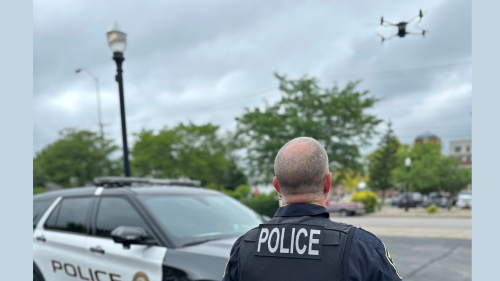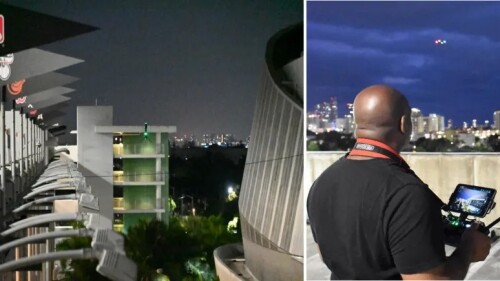Does your public safety drone have anti-collision lights installed and operational? To ensure maximum safety and airspace visibility, public safety agencies should install an anti-collision light on all drones.
Note: The green and red navigation lights are not anti-collision lights. They are not bright enough for manned aircraft to see — day or night.
Increase visibility, reduce collision risk
First, an anti-collision light clearly distinguishes a drone from a bird and provides far more warning of the drone’s presence. It gives manned aircraft the opportunity to avoid a collision. In nearly all drone-aircraft collisions, the manned aircraft pilot either never saw the drone or saw it too late to react. None of the drones involved in these collisions were equipped with anti-collision lights. For manned pilots, a flashing red or white light signals a life-threatening danger nearby and prompts immediate evasive action.
| POLICE1 NEW RESOURCE: How to fund drone as first responder programs
Airspace is becoming increasingly congested and significantly more dangerous during emergency incidents and disaster response. During disasters like the catastrophic floods in Texas, the number of both manned aircraft and drones rises dramatically — making every added measure of visibility critical to safe operations.
For law enforcement, when the light is mounted on top of the drone, it cannot be seen from the ground. This allows it to avoid interfering with covert operations. Comparatively, manned helicopters are required to display anti-collision lights at all times.
Prepare now for upcoming FAA rules
It’s also important to begin preparing now for the upcoming FAA BVLOS Part 108 Rule. Airspace will soon be even more populated and complex, with everything from delivery drones to Drone as a First Responder (DFR) programs.
Anti-collision lights are inexpensive — typically $15 to $50 — easy to install and significantly improve safety for everyone flying in the national airspace.
Let’s lead the way and do our part to keep the national airspace safe for all.









